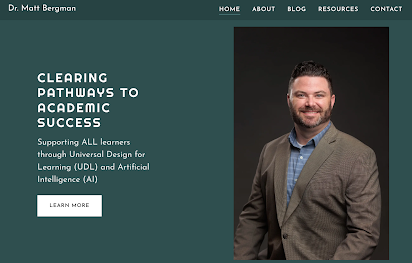 After exploring the site, I began to realize this is a great tool for science teachers who want to design a lesson that will impact all kinds of learning styles (UDL). For example, imagine that you are a teacher who is taking the opportunity to teach your students about your local habitat. You may begin by having students research a specific plant or animal on EOL. Students can learn the scientific name, habitat and ecology information, population, diet, etc.
After exploring the site, I began to realize this is a great tool for science teachers who want to design a lesson that will impact all kinds of learning styles (UDL). For example, imagine that you are a teacher who is taking the opportunity to teach your students about your local habitat. You may begin by having students research a specific plant or animal on EOL. Students can learn the scientific name, habitat and ecology information, population, diet, etc.Multiple Means of Representation:
Sometimes reading does not "connect all of the dots" for our students. This site provides multimedia clips in the forms of video, audio, and maps, providing another way of representing material for our visual and auditory learners. There are filters available, which makes navigating the different resources easier. Many of the maps are powered by Google, which gives students an opportunity to interact and "zoom in" on the natural environment of plants and animals.
Multiple Means of Action / Expression:
We've talked about the visual and auditory learners, but we are forgetting about your hands on learners! EOL has an activities section that contains a variety of hands on learning activities for our students to deepen their understanding. Imagine that you are teaching this lesson and use the Field Guide activity. This allows you to print out and create your own field guides, which could be used to help students explore their own back yard.
Multiple Means of Engagement:
When we are trying to create "expert" learners, we need to give students a chance to reflect on what they have learned, ask more questions, and make more connections. Some of your students may want to write a traditional paper in Microsoft Word or on a piece of notebook paper. However, EOL offers a way to for students to "reflect and connect" with other learners and experts. Simply by clicking the Community tab, students will be able to ask questions of experts of other EOL members who share the same interests or expertise. Obviously this should not be an option for some of our students!
When our students are able to connect with different ways of representing material, expressing their knowledge, and engaging with content, we are creating a successful lesson or unit. No matter what format you use, incorporating the elements of UDL can enhance any type of lesson plan format!





No comments:
Post a Comment